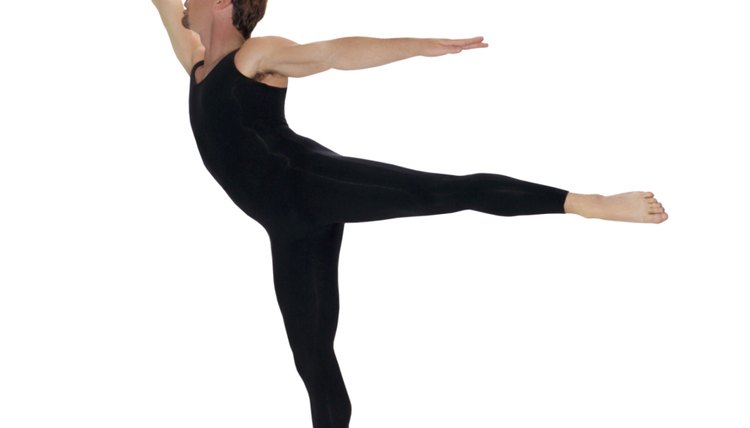What Ballet Does for Football

Though ballet and football appear at first to be very different, similarities do exist between the two activities. The same muscle groups are used, similar skills are required and even some of the same injuries are common. Because of this, practicing ballet as a form of cross-training may improve a player's performance on the football field. Professional football players such as Vance Johnson and Akili Smith even attribute ballet to their overall success on the field.
Flexibility
Flexibility is very important in football despite the fact that the sport is often seen as a strength-centric activity. Flexibility helps players to avoid tackles and make catches and can reduce the likelihood of injuries to joints such as the knees and shoulders. Ballet relies on flexibility to create graceful movements, so football players who study ballet receive training that increases their flexibility beyond what they would likely receive performing standard football training drills and exercises. NFL Hall of Fame member Lynn Swann even credits his graceful performance in games in part to flexibility that he learned from ballet training and other dance classes, adding that this training helped him achieve body control, balance and a sense of rhythm and timing.
Speed and Agility
On the football field, speed can mean the difference between a tackle and a touchdown. Ballet strengthens the legs, knees and ankles and makes use of rapid leg movements, all of which aid in the development of a faster running speed. Because of the various turns and other motions incorporated into ballet practice, football players who study ballet also become more agile and learn to recover their speed quickly after changing direction or spinning to avoid a tackle.
Strength
Though ballet dancers aren't what many people think of when they picture strong individuals, ballet actually requires a significant amount of arm and leg strength. Ballet also helps to develop muscular strength without adding significant amounts of bulk to the body; this is especially important for kickers and certain offensive players such as wide receivers and running backs who need strong legs but don't necessarily desire muscular bulk that could hinder their performance.
Balance
Good balance is vital to being effective as a football player. Ballet also requires good balance, as many of the techniques used in ballet involve jumps, turns and poses that would put a person without training off balance. Improving balance through ballet training makes it easier for players to make leaping catches without losing their footing and to stay on their feet while opponents try to tackle them or strip the football from their hands.
Mental Focus
Ballet requires a lot of focus, since most movements in ballet must be made with precision while appearing graceful and effortless. This focus is also a major boon on the football field, allowing players to follow complex plays, track the position of the ball in the air and make decisions on the fly, which may determine whether the ball makes it to the end zone. Ballet training can also reduce the effects of performance anxiety, allowing football players to play their best even if they get nervous in front of crowds.
Endurance
Ballet and other forms of dance are considered aerobic exercises because the muscles used during dance sessions and training require a large amount of oxygen to perform; this results in an increased workload for the lungs and heart as they attempt to provide this oxygen. Aerobic exercise strengthens the heart and circulatory system, making it easier for the body to deliver oxygen and nutrients to its muscles during periods of intense muscular work. For football players, this translates to increased endurance on the field, allowing their bodies to run, jump and face impacts from other players for a longer period of time without tiring.
References
- Seattle Times: Punt, Pass and Plié -- Ballet Has Its Seahawks Fans, Too
- Slate Magazine: Big Men Stretching
- Pro Football Hall of Fame: Class of 2001 Inductee Bio -- Lynn Swann
- American Academy of Orthopedic Surgeons: Cross Training
- Seattle Post-Intelligencer: Saturday Q&A: Nicholas Ade, Pacific Northwest Ballet Dancer
- Dance Magazine: Leveling the Playing Field
Writer Bio
Born in West Virginia, Jack Gerard now lives in Kentucky. A writer and editor with more than 10 years of experience, he has written both articles and poetry for publication in magazines and online. A former nationally ranked sport fencer, Gerard also spent several years as a fencing coach and trainer.
